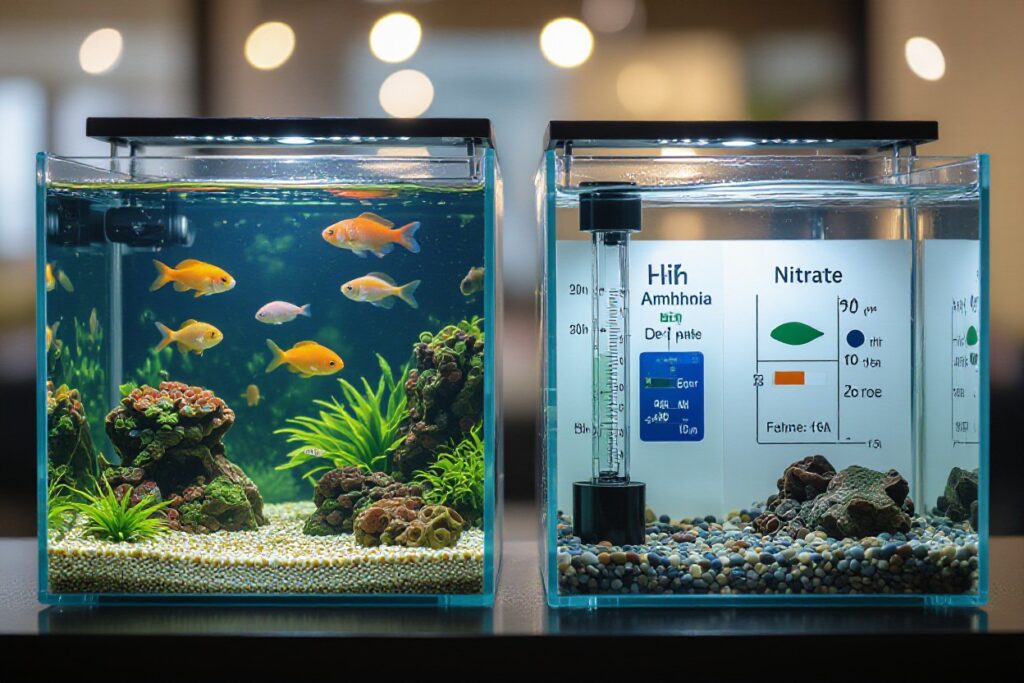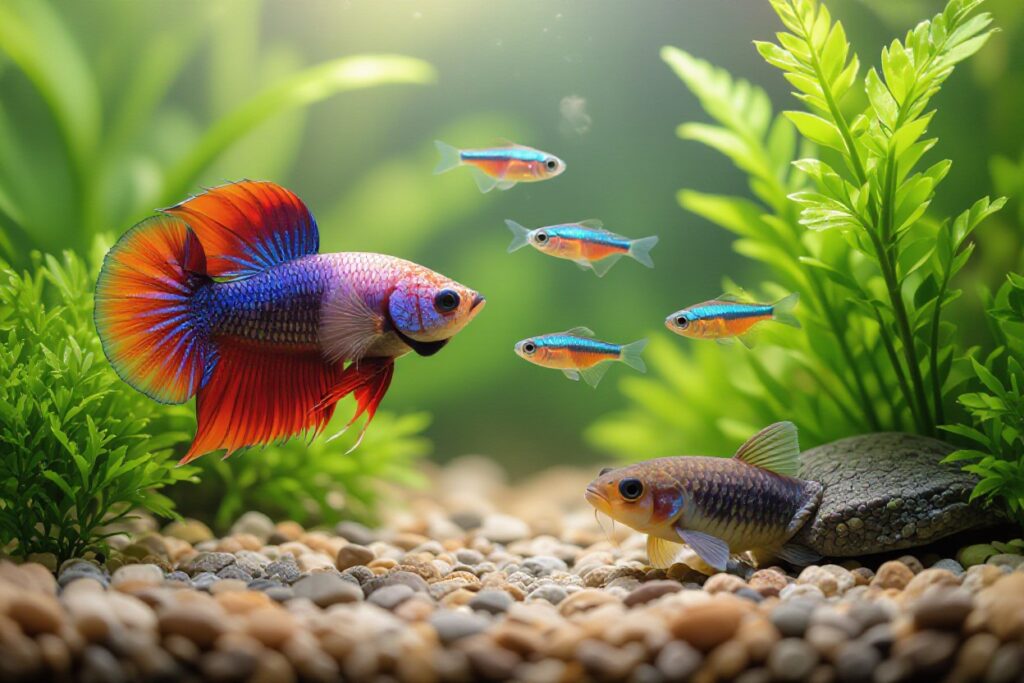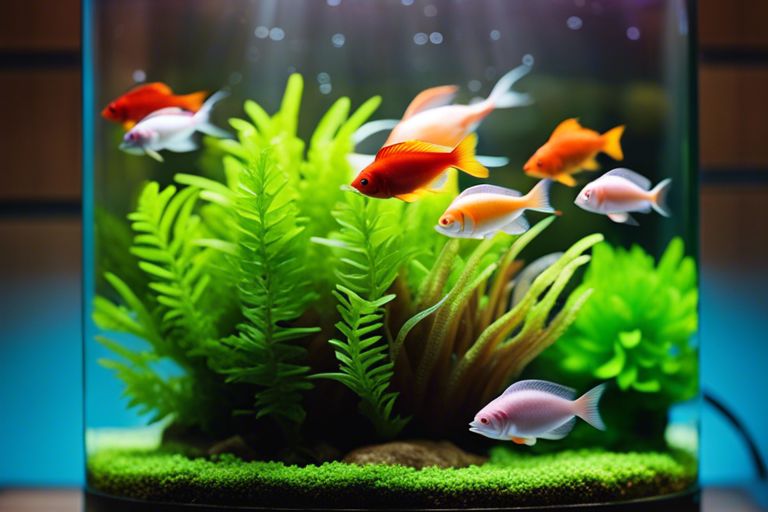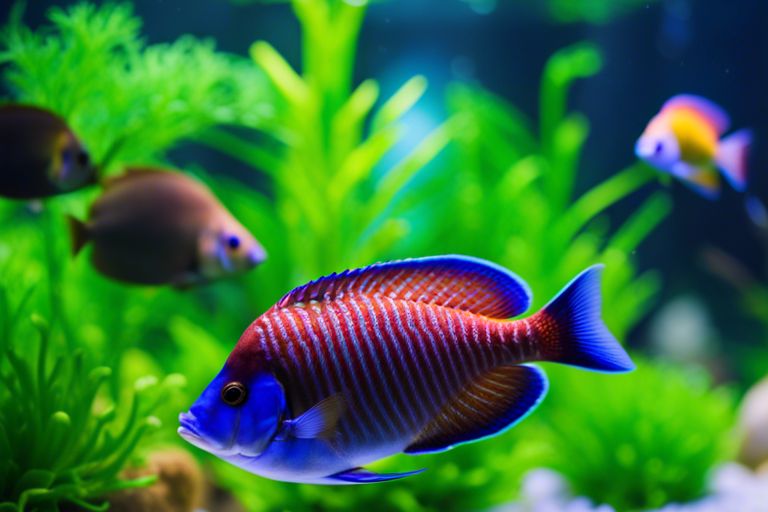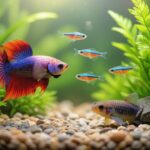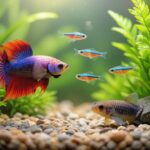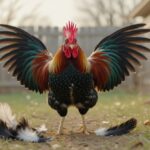Most of your fish’s survival and well-being depends on precise water chemistry; you need to monitor pH, temperature, GH/KH, and oxygen—low oxygen and high ammonia and nitrite can be immediately dangerous, while stable pH and appropriate temperature ranges support growth. This guide shows you testing methods, species-specific targets, and how to make safe adjustments with regular monitoring so your aquarium stays within vital levels for healthy fish.
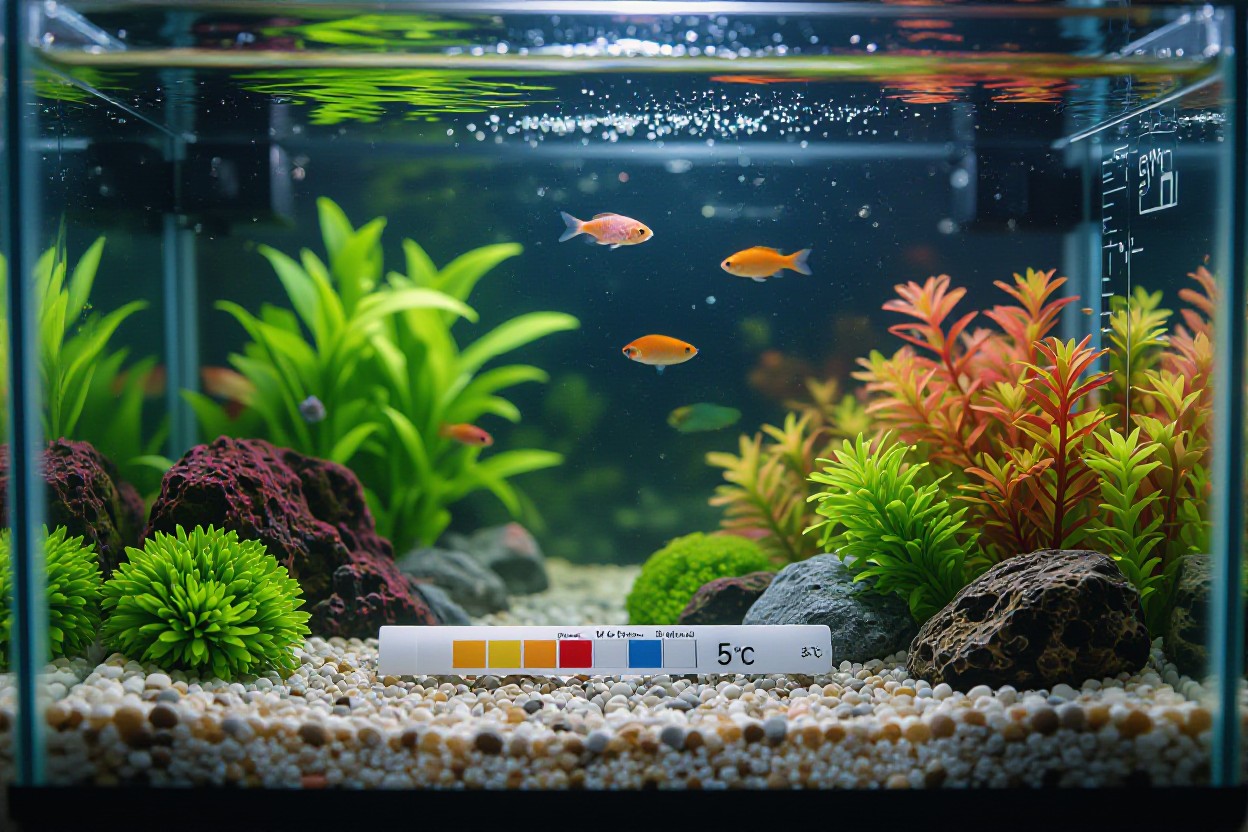
Understanding pH Levels
pH measures acidity on a 0–14 scale and directly shapes many aspects of water chemistry relevant to your fish; typical aquarium ranges fall between 6.0–8.5. You must align pH with species-specific needs—tetras ~6.0–7.0, discus 5.5–6.5, African cichlids 7.8–8.6—and manage KH buffering to stabilize readings. pH also affects ammonia/nitrite toxicity and the performance of nitrifying bacteria in the nitrogen cycle, making it a core element of vital levels for fish.
Importance of pH for Fish Health
pH governs gill function, ion exchange, reproductive success and immune response, so you’ll see behavior and growth changes when it drifts. For example, goldfish do well at 7.0–8.4 while discus require acidic water; mismatched pH leads to osmotic stress and weakened slime coat. Additionally, pH modulates ammonia toxicity, increasing physiological risk as pH rises.
Effects of pH Fluctuations
Rapid pH swings cause acute stress, reduced feeding, and elevated mortality; a change of more than 0.5 pH units within 24 hours is often harmful. You may observe gasping, clamped fins, or sudden die-offs when pH destabilizes. Repeated cycling between acidic and alkaline extremes impairs nitrifying bacteria and can precipitate nitrite spikes, worsening water quality.
In planted tanks CO2 injection commonly drops pH during lights-on, while peat or softening resins lower pH in blackwater setups; municipal source variations can cause nightly swings. When adjusting you should test daily during adjustments, change buffering capacity slowly (raise KH by 1–2 dKH over days) and perform 10–20% water changes to avoid shock. Stabilize KH first to prevent recurring fluctuations.
The Nitrogen Cycle
The nitrogen cycle converts fish waste and uneaten food into forms that affect your tank’s chemistry: first ammonia (NH3/NH4+), then nitrite (NO2−), and finally nitrate (NO3−). It establishes over roughly 4–6 weeks in new systems, driven by colonies of nitrifying bacteria; until those populations stabilize you must test frequently because even small spikes in ammonia or nitrite can rapidly compromise your fish and other vital levels for fish.
Key Processes in the Nitrogen Cycle
Ammonification liberates NH3 from protein breakdown, then nitrification occurs in two steps: Nitrosomonas oxidize ammonia to nitrite, and Nitrobacter (or similar genera) oxidize nitrite to nitrate; both processes require oxygen and optimal temperatures around 20–30°C. Denitrification in anaerobic pockets converts nitrate to N2 gas, but relies on low-oxygen zones or specialized filters; if you overload the system, nitrite spikes are common during bacterial lag phases.
Implications for Aquatic Life
Ammonia and nitrite are acutely toxic: ammonia damages gills and raises mortality, while nitrite impairs oxygen transport (brown-blood disease); nitrate is less immediately dangerous but causes chronic stress and poor growth when above ~20–40 mg/L. You must monitor these parameters to keep other vital levels for fish stable and to prevent rapid health decline or sudden die-offs.
In practice, respond to a detected spike by doing an immediate 25–50% water change, reducing feeding, and adding aeration to boost nitrification; seeding filter media from an established tank can cut cycle time from weeks to days. For example, a 100 L community tank overloaded with 10 new adult fish produced 1.2 mg/L ammonia within 48 hours—daily testing and successive 40% changes over three days brought ammonia under 0.02 mg/L and prevented further losses. Use reliable test kits and check ammonia/nitrite at least twice weekly during cycling or after system changes.
Temperature Requirements for Fish
You must match your species’ thermal window: most tropical community fish prefer 24–27°C (75–81°F), while goldfish do better at 10–20°C (50–68°F). Sudden swings of >2–3°C in 24 hours raise stress and disease risk, and extended deviations impair filtration and oxygen balance. Use a calibrated thermometer, reliable heater, and consider species mixes to avoid forcing compromises that harm growth, immune function, and ammonia dynamics.
Temperature Overview
| Category | Typical range |
| Tropical community | 24–27°C (75–81°F) |
| Discus / cardinal tetras | 28–31°C (82–88°F) |
| Livebearers (platies, mollies) | 22–28°C (72–82°F) |
| Goldfish / coolwater | 10–20°C (50–68°F) |
| Shrimp / sensitive inverts | 18–24°C (64–75°F) |
Optimal Temperature Ranges
For stable growth and reproduction you should target species-specific bands: 24–27°C for most community tetras, 28–31°C for discus, and 10–20°C for common goldfish. When acclimating or adjusting setpoints, change temperature by no more than 0.5–1°C per day to avoid thermal shock and osmotic stress that lowers feeding and immune response.
Recommended Ranges
| Fish / Group | Optimal (°C / °F) |
| Tetras, rasboras | 24–27°C (75–81°F) |
| Discus | 28–31°C (82–88°F) |
| Guppies, platies | 22–28°C (72–82°F) |
| Goldfish, koi | 10–20°C (50–68°F) |
| Neocaridina shrimp | 18–24°C (64–75°F) |
Effects of Temperature Changes
Raising temperature accelerates metabolism—metabolic rate roughly doubles per 10°C increase (Q10≈2)—so you’ll see higher feeding and waste production; simultaneously oxygen solubility falls (e.g., ~9.1 mg/L at 20°C to ~7.6 mg/L at 30°C), and ammonia toxicity and stress risk increase. Rapid drops cause lethargy and immune suppression, while spikes can trigger mass mortality in sensitive species.
Temperature Impacts
| Effect | Consequence / example |
| Increased metabolism | More feed intake, higher NH4+/NH3 production |
| Lower O2 solubility | Hypoxia risk at >28–30°C without aeration |
| Higher ammonia toxicity | NH3 fraction rises with temp and pH → faster poisoning |
| Thermal shock | Temperature swing >3°C → stress, disease outbreaks |
In practical terms, if your heater fails and a community tank drops from 26°C to 18°C, you’ll observe reduced appetite, slower nitrification, and susceptibility to pathogens; conversely a heater overshoot to 31°C can reduce dissolved O2 from ~8.1 mg/L to ~7.4 mg/L and precipitate gasping or aggression. For mitigation you should use redundant heaters/controllers, increase surface agitation or aeration during warm periods, and test ammonia/nitrite more frequently after any sustained temperature shift.
Scenarios and Actions
| Scenario | Action / impact |
| Cooldown (>5°C drop) | Slow acclimation, reduce feeding, monitor nitrite |
| Heat spike (>3°C rise) | Boost aeration, lower lights, check ammonia immediately |
| Planned setpoint change | Adjust ≤1°C/day, observe behavior and filtration |
| Mixed-species tank | Choose overlap range to prevent chronic stress |
Hardness and Minerals in Water
Hardness (GH) quantifies dissolved calcium and magnesium, while carbonate hardness (KH) measures buffering capacity; 1 dGH ≈ 17.9 ppm CaCO3. Soft water is generally <4 dGH (≈0–70 ppm), moderate 4–8 dGH (≈70–140 ppm), and hard >8 dGH (>140 ppm). You should match GH/KH to species needs—discus thrive near 1–4 dGH, African rift cichlids prefer 10–20 dGH—and avoid rapid hardness swings that can stress osmoregulation and immune function.
Role of Hardness in Fish Biology
Hardness directly affects osmoregulation: calcium and magnesium stabilize gill ion channels, support enzyme cofactors, and influence egg shell formation. For example, neon tetras and discus have adapted to low-ion Amazon water, whereas Lake Malawi cichlids depend on high GH for reproduction. If KH falls below ~2 dKH, you risk dangerous pH swings overnight; conversely, stable KH (4–8 dKH) helps keep pH steady for most community setups.
Essential Minerals for Fish Growth
Calcium (Ca2+) and magnesium (Mg2+) are the primary minerals for skeletal and scale integrity and metabolic function; potassium supports neuromuscular activity and plant health. Trace elements — iodine, iron, selenium, zinc — act as enzyme cofactors and hormone precursors. You should maintain Ca and Mg in the tens of mg/L range appropriate to species, and monitor trace metals because excesses (e.g., copper) are toxic even at low concentrations.
Practically, use RO/DI water plus a calibrated remineralizer to hit target GH/KH for species-specific needs; raise GH slowly (aim ≤1–2 dGH per day) while testing after each dose. Livebearers and many hard-water cichlids do well at 10–20 dGH, while Neocaridina shrimp often require ~6–12 dGH and stable TDS. For planted tanks, dose potassium and iron per plant load, and always verify with test kits before making larger adjustments.
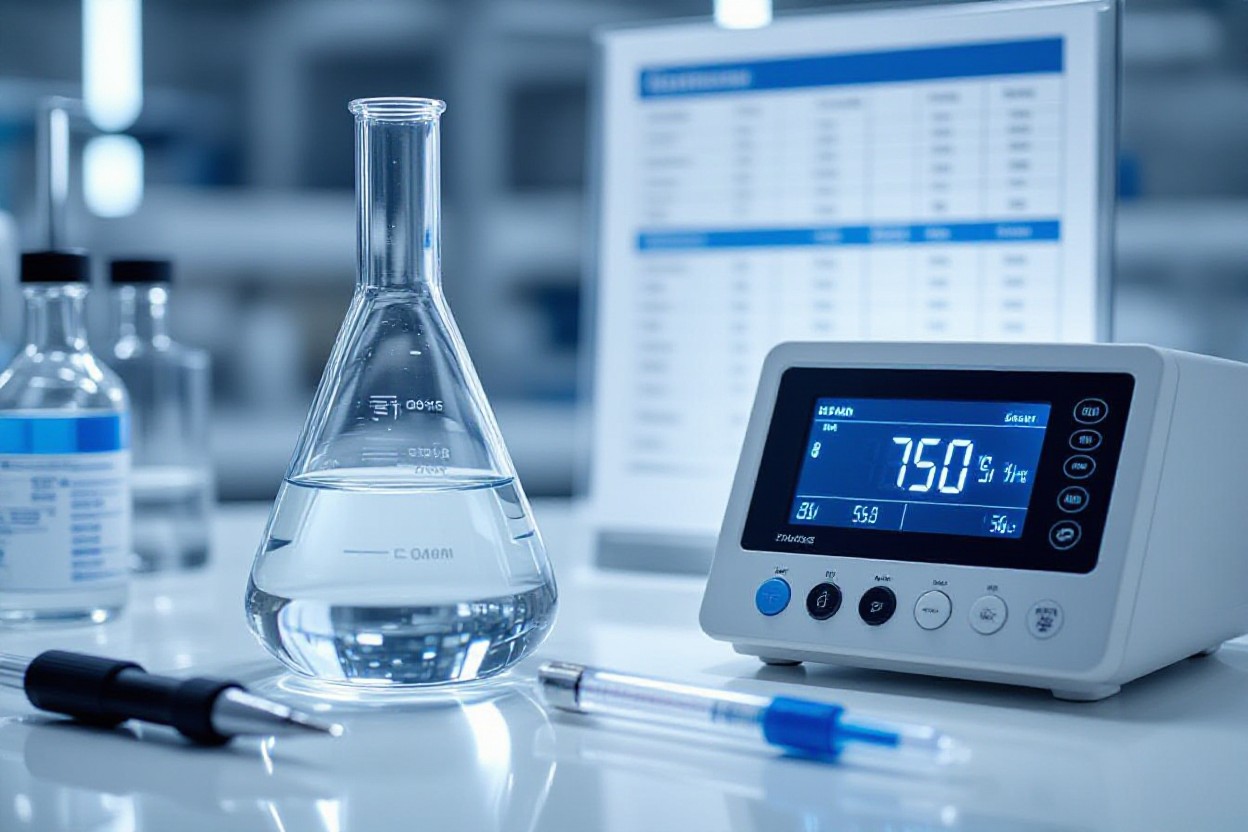
Testing and Adjusting Water Parameters
You should test at least weekly and more often during cycling or when fish show stress; use a log to track trends. If you detect ammonia >0.25 ppm or nitrite >0.5 ppm, perform immediate corrective steps; for slow issues like elevated nitrate aim to get values below 20–40 ppm via scheduled changes and plant uptake. Rapid swings are harmful, so prioritize incremental, measured corrections and record each adjustment.
Tools for Testing Water Quality
Use a combination of tools: liquid titration kits for ammonia/nitrite/nitrate (sensitivity to ~0.25/0.1/5 ppm respectively), digital pH meters (calibrate weekly with pH 4/7/10 buffers), TDS meters for conductivity, and dissolved oxygen probes for sensitive species. Test strips are quick but less precise. For lab-quality checks consider sending samples to a local aquatic lab when persistence or unexplained mortality occurs.
Methods for Adjusting Parameters
Partial water changes (typically 10–25% weekly, emergency up to 50%) remain the primary control for ammonia/nitrate; use RO/DI water blended to target GH/KH, add crushed coral or aragonite to raise KH/GH, and peat or driftwood to lower pH/KH gradually. Employ biological strategies — seeded media and live plants — and reserve chemical binders or detoxifiers for short-term emergencies.
When adjusting, move slowly: limit pH shifts to about 0.2 units per 24 hours. For rapid ammonia spikes do an immediate 50% water change, add oxygenation, and transfer mature filter media to boost nitrifiers; consider zeolite or ammonia binders as a temporary sink. To raise KH you can dose sodium bicarbonate (many hobbyists start with ~1 teaspoon per 10 US gallons to raise ~1 dKH and then retest), while peat can lower pH by ~0.2–1.0 over weeks—always dose based on frequent tests and species-specific targets (e.g., discus pH 5.5–6.5 vs. African cichlids pH 7.8–8.6).
Common FAQs
pH & nitrogen
Temperature & hardness
Testing & adjustments
You should keep ammonia and nitrite at 0 ppm, nitrates 20–40 ppm or lower and pH typically 6.5–8.0 depending on species. Aim for tropical temps of 24–28°C (goldfish 18–22°C), GH ~4–12 dGH, KH ~3–8 dKH and oxygen >5 mg/L. Test your water weekly in stable tanks, daily during cycling, and adjust parameters slowly (≤25% water change/day) to avoid shock; these vital levels for fish prevent acute toxicity and chronic stress.
Summing up
Following this guide, you can confidently manage the vital levels for fish by routinely testing and stabilizing pH, ammonia/nitrite/nitrate, temperature, GH/KH, and dissolved oxygen, applying safe adjustment methods tailored to species requirements, and setting a monitoring schedule that prevents drift. Use accurate test kits, track trends, and implement gradual corrections to preserve your water chemistry and your fish’s health.
